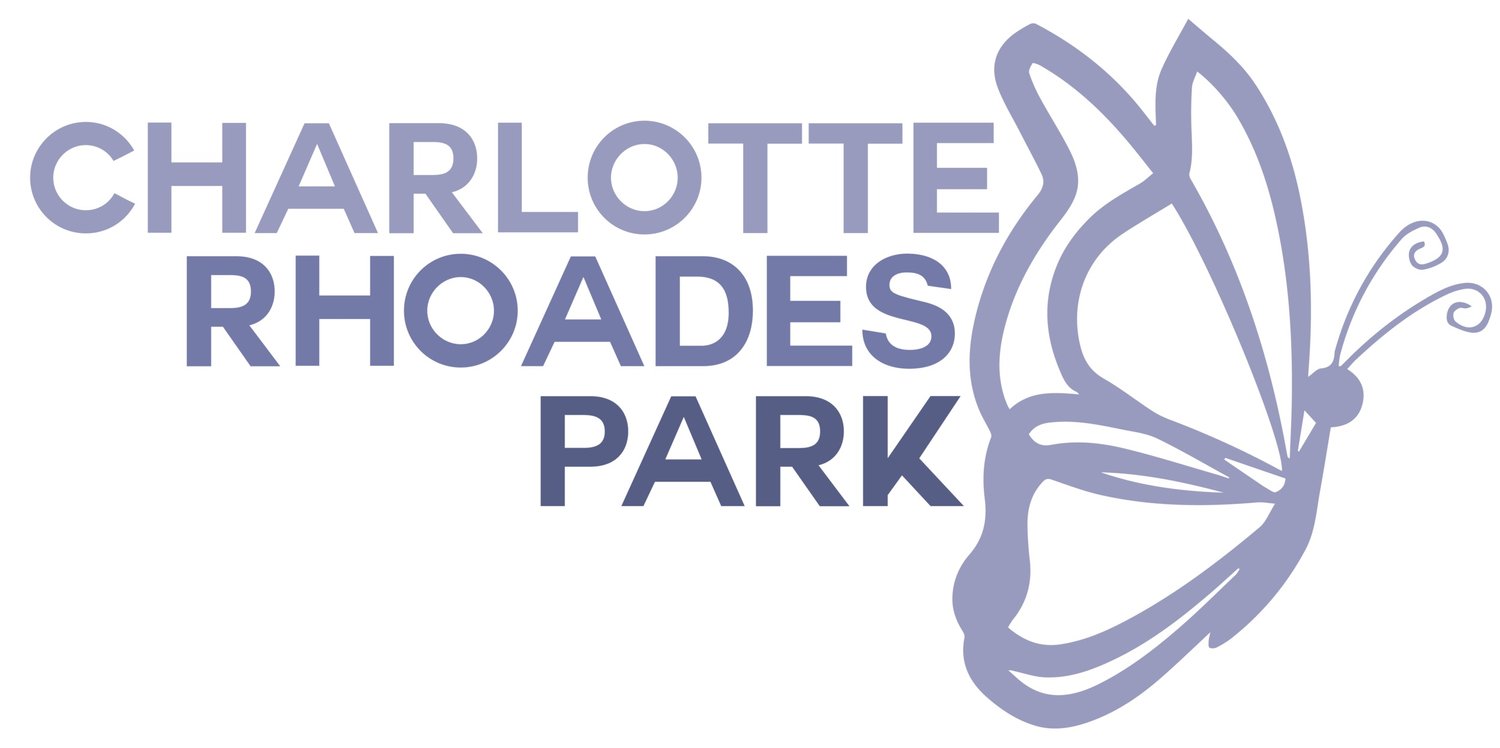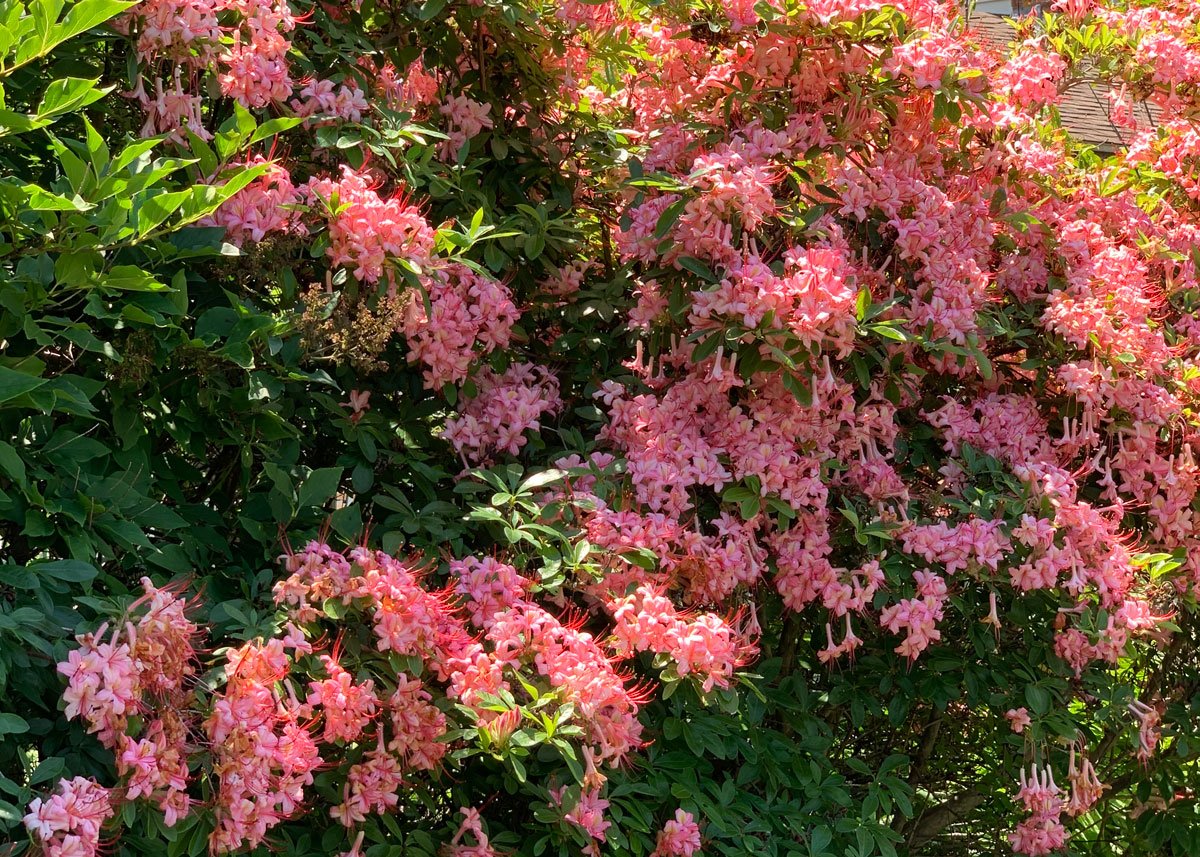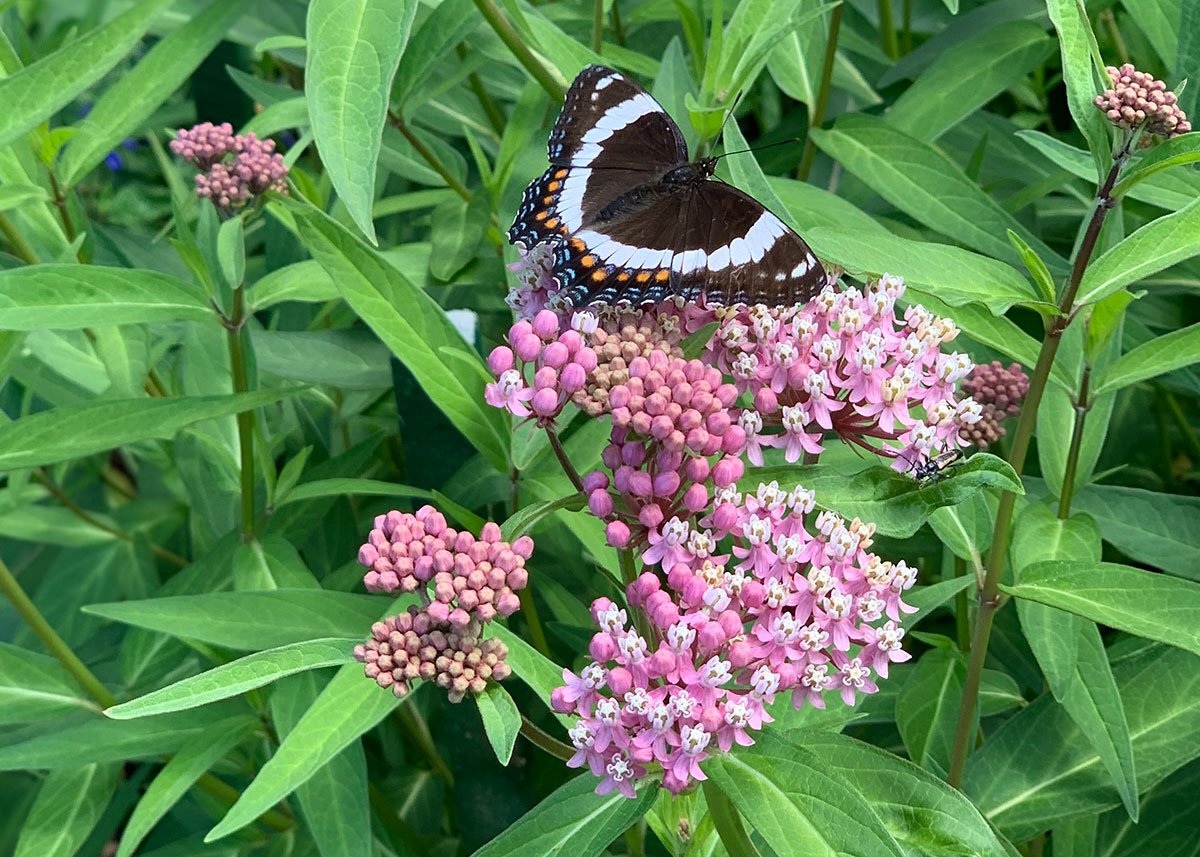Asclepias tuberosa
The leaves, blossoms, and seed pods are eaten by the Monarch butterfly. The blossoms are a host nectaring plant to all butterflies. The glycosides in the latex of native Butterfly Weed are not as toxic as other native milkweed species.
Asclepias syriaca
Common Milkweed leaves, blossoms, and seed pods are eaten by the Monarch caterpillar, however, many species of butterflies nectar on the flowers of this native plant. The plant's latex contains glycosides, making it toxic to animals. It is an aggressive rhizomatous spreader and best planted in a field and not in a flower border.
Asclepias incarnata ‘Cinderella’, ‘Soulmate’, ‘Ice Ballet’
The leaves, blossoms and seed pods are larval food for the Monarch caterpillar. Many butterfly species nectar on the blooms of this native plant. Latex produced by the plant contains glycosides making the plant toxic to animals.
Asclepias currassavica
Tropical milkweed is grown in Maine as an annual and the leaves and blossoms provide food for late season Monarch caterpillars. It is non-native, and therefore not an ideal choice for growing in Maine butterfly gardens, but works well in a pot or planter on a deck if there is no space for a garden.
Anthirrhinum majus
Snaps are short-lived tender perennials but grown as an annual in Maine. They are happy in a well-drained sunny planting bed that is not too hot. Deer tend to avoid this plant.
Ammi majus
This plant is a hardy annual with large domed umbels that is virtually pest and disease free. Because the sap can cause skin irritation, gardeners should wear gloves when handling Queen Anne’s Lace. Wash the skin area that is exposed to the sap, using soap and water.
Ageratum houstonianum 'Blue Horizon'
This annual plant has a wonderful medium blue color for any summer garden. The blooms are great for arrangements, and it also blooms like a flowering perennial for most of the summer. It is rabbit and deer resistant. As a nectaring plant, it is essential for any butterfly garden.
Agastache aurantiaca x 'Apricot Sprite'
This is a Hummingbird favorite. It is a perennial in southern New England so it is grown as an annual in the Butterfly Garden. It has mint scented flowers and foliage, making it deer and rabbit resistant. It makes an excellent container plant because of its extended bloom time.
Adenophora stricta
There are at least ten species of Adenophora. The most common are Purple Ladybells, which produces blue flowers. It is a vigorous grower and is best planted along woodland edges as it spreads easily.
Achillea x 'Moonshine'
This yarrow attracts bees, butterflies, and hummingbirds. It is rabbit and deer resistant, it is low maintenance and frost tolerant. The plant has pretty silvery gray leaves and citron yellow flowers.
Achillea ptarmica 'Double Diamond'
This deer Tolerant, drought tolerant, low maintenance yarrow can be planted in dry rocky soil. Showy for good cut and dried flowers. For best results divide every 2-3 years. Can tolerate some shade.
Achillea Millefolium 'Summer Berries'
Broad flat clusters of flat headed flowers are on upright stems with aromatic, finely cut, fern-like leaves that attract butterflies. Profuse bloomer. Drought tolerant, heat tolerant, and low maintenance.












